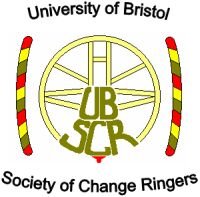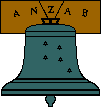
Change ringing is the art of ringing a set of tuned bells in a tightly controlled manner to produce precise variations in their successive striking sequences, known as "changes". This can be by method ringing in which the ringers commit to memory the rules for generating each change, or by call changes, where the ringers are instructed how to generate each change by instructions from a conductor. This creates a form of bell music which cannot be discerned as a conventional melody, but is a series of mathematical sequences.

Campanology is the scientific and musical study of bells. It encompasses the technology of bells – how they are founded, tuned and rung – as well as the history, methods, and traditions of bellringing as an art.

John Taylor Bell Foundry (Loughborough) Limited, trading as John Taylor & Co and commonly known as Taylor's Bell Foundry, Taylor's of Loughborough, or simply Taylor's, is the world's largest working bell foundry. It is located in Loughborough, in the Charnwood borough of Leicestershire, England. The business originated in the 14th century, and the Taylor family took over in 1784.

Steeple Aston is a village and civil parish on the edge of the Cherwell Valley, in the Cherwell District of Oxfordshire, England, about 12 miles (19 km) north of Oxford, 7 miles (11 km) west of Bicester, and 10 miles (16 km) south of Banbury. The 2011 Census recorded the parish population as 947. The village is 108 metres (354 ft) above sea level. The River Cherwell and Oxford Canal pass 1 mile (2 km) east of the village. The river forms part of the eastern boundary of the parish. The parish's southern boundary, 1⁄2 mile (800 m) south of the village, also forms part of Cherwell District's boundary with West Oxfordshire.
The Oxford University Society of Change Ringers, founded in 1872, is the official society dedicated to change ringing in Oxford University. Its objects are to promote the art of change ringing in the university and to ring for Sunday services in Oxford during full term.

Dove's Guide for Church Bell Ringers is the standard reference to the rings of bells hung for English-style full circle ringing. The vast majority of these "towers" are in England and Wales but the guide includes towers from the rest of the British Isles as well as a few from around the world. The latest edition is Dove's Guide for Church Bell Ringers to the Rings of Bells of the World.

The Nottingham University Society of Change Ringers (NUSCR) is one of the oldest societies affiliated to the University of Nottingham Students' Union, being founded in 1958. Its principal aim is to allow students from both the University of Nottingham and Nottingham Trent University to practise English Change Ringing. It also represents the University at the annual Northern Universities Association (NUA) Striking Competition each November.
The Ancient Society of College Youths (ASCY) is a change ringing society, founded in 1637 and based in the City of London. The society played a leading role in the early development of change ringing, and today, it provides ringers for important events at St Paul's Cathedral and Westminster Abbey. Although it is a non-territorial association, its importance is recognised through having four representatives on the Central Council of Church Bell Ringers.

In campanology, a peal is the special name given to a specific type of performance of change ringing which meets certain exacting conditions for duration, complexity and quality.
The North American Guild of Change Ringers (NAGCR) was founded in 1972 after the hanging of a ring of bells in the Washington National Cathedral in Washington, D.C., United States, in 1964. The NAGCR has now grown and expanded to 52 bell towers across the United States and Canada as well as one mini-ring and 9 hand-bell groups with more than 500 members residing in North America. This organization performs the art of change ringing or method ringing, a form of campanology, in the towers and on hand-bells. This art uses mathematical sequences and patterns to change bell orders to carry out these sequences. Change ringing began in England in the 17th century.
Rudhall of Gloucester was a family business of bell founders in the city of Gloucester, England, who between 1684 and 1835 cast more than 5,000 bells.

A bell-ringer is a person who rings a bell, usually a church bell, by means of a rope or other mechanism.

The University of Bristol Society of Change Ringers (UBSCR) is a change ringing society. UBSCR is associated with the University of Bristol and is affiliated to Bristol SU. UBSCR was established in 1943 and has rung bells at St Michael on the Mount Without since 1944. Since 1950 there have been over 700 peals rung for the society. UBSCR is also affiliated to the Central Council of Church Bell Ringers and sends two representatives to its AGM.

Vivienne Frances Faull is a British Anglican bishop and Lord Spiritual. Since 2018, she has served as the Bishop of Bristol. In 1985, she was the first woman to be appointed chaplain to an Oxbridge college. She was later a cathedral dean, and the only female cathedral provost in Church of England history, having served as Provost of Leicester from 2000 to 2002.
The Central Council of Church Bell Ringers (CCCBR) is an organisation founded in 1891 which represents ringers of church bells in the English style.

The Australian and New Zealand Association of Bellringers, known as ANZAB, is the organisation responsible for the promotion of English-style "full circle ringing" – namely change ringing and method ringing in bell towers with a peal of bells – across Australia and New Zealand.

The Church of St John the Baptist, Leytonstone, is a 19th-century Church of England parish church in Leytonstone, East London, occupying a prominent position in the High Road. It is a Grade II listed building.

The Suffolk Guild of Ringers for the Diocese of St Edmundsbury and Ipswich is a society and charity supporting the bell ringers and rings of bells in the Diocese of St Edmundsbury and Ipswich who practice the art of change ringing. The Guild was established on 2 April 1923 at Ipswich and covers over 200 rings of bells in the county of Suffolk in the area that falls within the diocese boundary.
Campanology is the scientific and musical study of bells. It encompasses the technology of bells – how they are cast, tuned, and rung – as well as the history, methods, and traditions of bellringing as an art. Articles related to campanology include:













